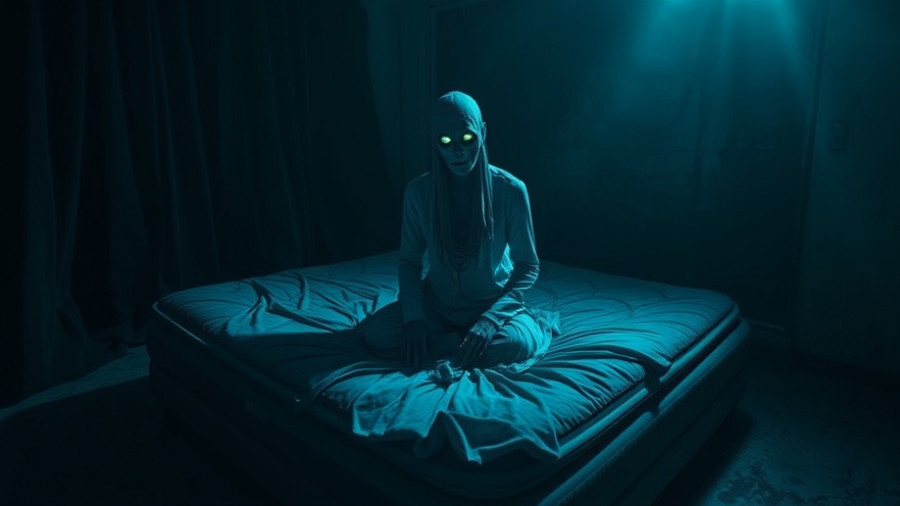
Exploring the Unseen Realms of 'Shelby Oaks'
For horror fans and cinema enthusiasts, 'Shelby Oaks' represents more than just another film; it's the culmination of YouTube movie critic Chris Stuckman's first venture into feature filmmaking. Labeled as a significant turn for an online personality stepping into the director's chair, the film offers a mix of paranormal intrigue and a quest for family that ends up being decently crafted yet flawed.
In 'Shelby Oaks - Did I Get Stuckmanized?', Chris Stuckman’s transition from YouTube critic to filmmaker is explored, prompting us to analyze the film's various elements and possibilities.
The Premise: A Haunted Search
'Shelby Oaks' follows the story of Mia, played by Camille Sullivan, as she embarks on an unsettling journey to find her sister Riley, who mysteriously vanishes while investigating an enigmatic, abandoned town. The movie is said to blend found footage, mockumentary styles, and traditional horror narrative formats, promising to keep viewers on the edge of their seats.
However, this blend of styles results in a chaotic narrative that is often hard to follow. More than just a horror film, it attempts to incorporate elements of childhood trauma and fractured family dynamics, but struggles to deliver a cohesive experience. Is it about demonic possession or serial killers? Perhaps a mix of both? One can't help but to question what the film ultimately aims to convey.
Technical Prowess: Visually Impressive, Yet Lacking Depth
On a technical level, 'Shelby Oaks' presents itself well. The cinematography shows care with dynamic camera movement, sharp framing, and well-executed jump scares. The film manages to encapsulate the eerie atmosphere typical of horror films, featuring creepy cabins in the woods and sinister underground tunnels. This attention to visual detail invites audiences into its unsettling world, yet it struggles to balance its technical merit with a solid narrative foundation.
The strength of the film lies in its visuals; a testament to the meticulous work of the director and the crew. Yet one has to wonder, does technical skill alone carry a film, especially in a genre known for compelling storytelling?
Character Performances: A Mixed Bag
While the performances generally hold their own, they don't particularly stand out in the overcrowded horror genre. Sullivan's Mia evolves throughout the film, yet her initial timidity sometimes detracts from her character's strength. Despite her growing confidence, the script’s less-than-stellar dialogue and pedestrian character moments leave plenty to be desired.
All the while, notable appearances, such as Keith David, seem wasted. As a cherished actor, you'd expect him to deliver an unforgettable performance, yet his presence becomes a fleeting moment of exposition in a script that often feels cluttered with subplots and side stories that weigh the narrative down, rather than enhance it.
Pacing Issues: The Drag in the Middle
Perhaps one of the film's most glaring flaws is its pacing. The slow first act filled with backstory feels unnecessary—not unlike sitting through an extended prelude at a concert. Viewers might find themselves checking their watches rather than engaging with the unfolding drama. With limited character interplay and a focus on Mia's aimless wanderings at various locations, the plot struggles under its own weight.
This lack of coherent direction leaves audiences disoriented as they await a substantive narrative payoff, which ultimately never materializes the way they might hope.
Final Thoughts: A Cautious Debut
'Shelby Oaks' is not without merit. Instead of being an embarrassing disaster, it emerges as a cautious, if imperfect, start for Stuckman as he navigates the often-treacherous waters of filmmaking. It evokes curiosity and nostalgia for horror fans, albeit lacking the striking originality and execution worthy of their investment. Perhaps, it is simply another horror movie that, while ambitious, falls shy of its potential.
For those looking to explore Chris Stuckman's evolution as a creator, 'Shelby Oaks' might serve as a compelling case study—an experience ripe for analysis rather than fear. While the film may not revolutionize the horror genre, it certainly opens a conversation about the trajectory of online critics turning to directing.
 Add Row
Add Row  Add
Add 




Write A Comment